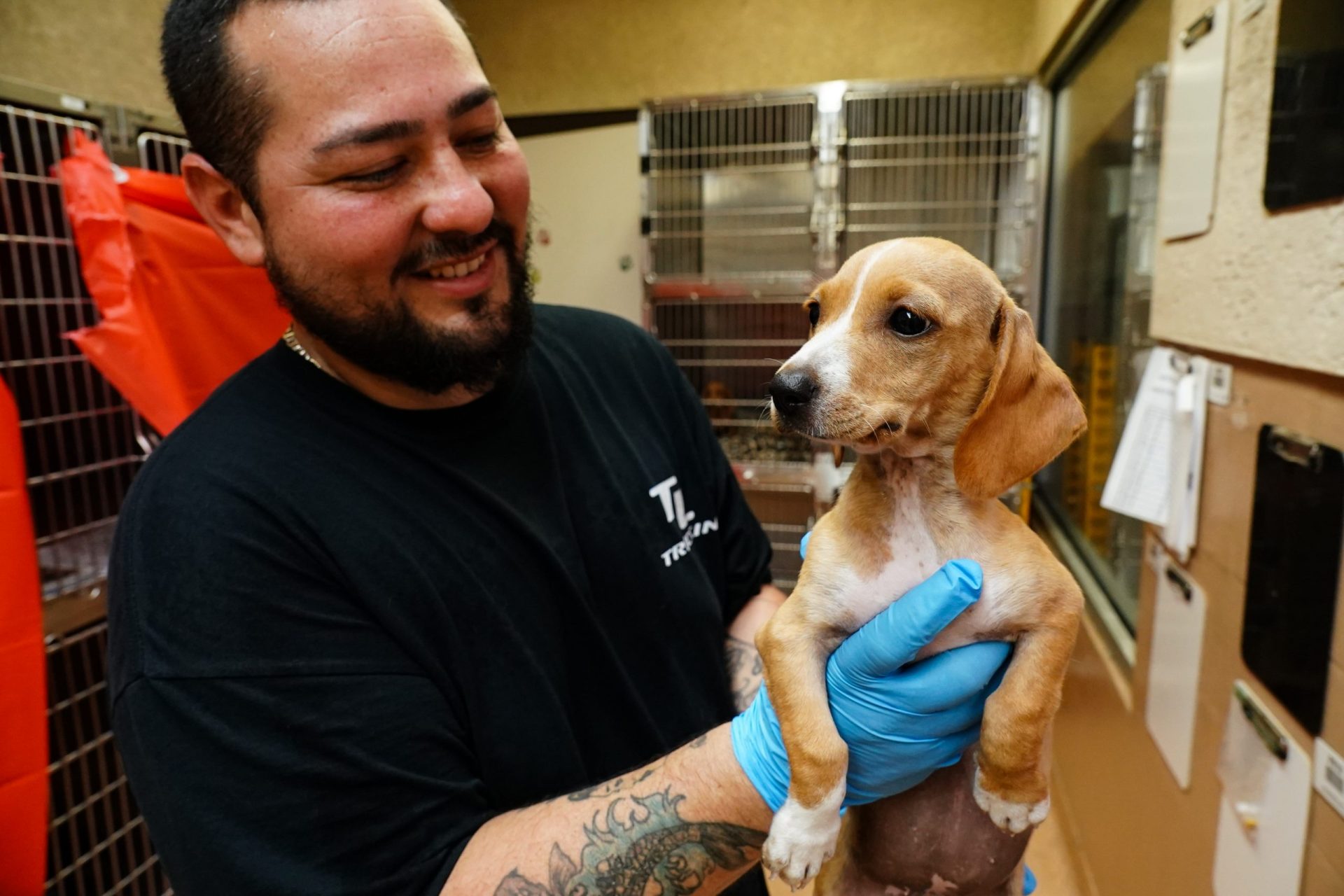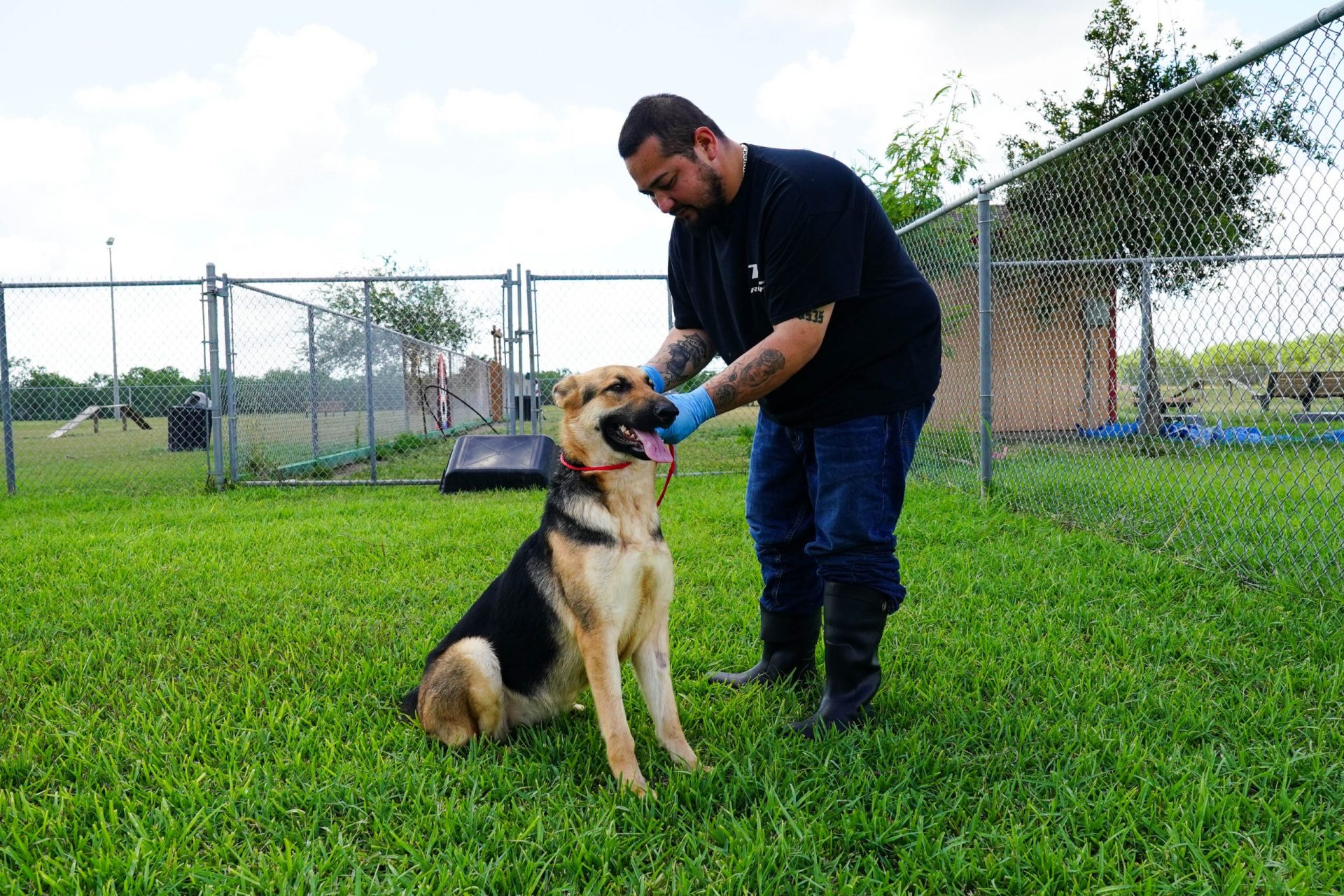|
Only have a minute? Listen instead
Getting your Trinity Audio player ready...
|

In response to an overwhelming surge in stray and unwanted dogs and cats being brought to its shelter, the Brownsville Animal Regulation and Care Center (BARCC) has teamed up with public libraries in Brownsville and Los Fresnos for Library Adoption Days, with the goal of finding forever homes with loving, responsible families for more of the city’s most vulnerable inhabitants as opposed to euthanizing them.
Library Adoption Days are scheduled for:
>> Sept. 7 from 3 to 6 p.m., Ethel L. Whipple Memorial Library, 402 Ocean Blvd, Los Fresnos;
>> Sept. 8 from 4 to 6 p.m., Brownsville Public Library Southmost Branch, 4320 Southmost Rd;
>> Sept. 9 from 9 to 11 a.m., Brownsville Public Library Main Branch, 2600 Central Blvd.
The city of Brownsville is waiving adoption fees for all dogs during this event, and cat adoption fees have been reduced to $49. Each adoption includes a complete health check, vaccinations and sterilization services to ensure the well-being of the newly adopted pets, according to the city.
Antonio Caldwell, deputy director, said the initiative exemplifies the “spirit of community collaboration and compassion.”
“We’re thrilled to partner with local libraries to create a platform where residents can not only find a loyal companion but also contribute to the welfare of these canines (and felines) in need,” he said.
BARCC’s animal population typically surges with breeding season this time of year, though it seems especially high this year, Caldwell said.
“I will say that our general population has hovered around 200 to 225, but it’s kind of swelled to (more than 300), which is more than what we typically have,” he said. “We have a lot of kittens and lot of puppies with moms. When you take in all of that, that number of 300-plus is a number that we really haven’t really held in our shelter before.”
For years the shelter has typically euthanized between 300 and 400 animals a month due to lack of kennel space, though the number has been reduced to 50 or fewer per month since May when BARCC changed its intake policies, Caldwell said. Although the shelter still accepts strays “every day, all day,” BARCC now schedules “surrenders,” or pets turned over to the shelter by residents who decide they can’t or don’t want to take care of them anymore, he said.

“It’s difficult for us to manage the intakes, so we’re trying our best by booking a certain number of animals per day that the community can turn in,” Caldwell said. “It’s still quite a bit, because we still have to bring in the stray animals that we get calls on.”
The biggest difficult is balancing shelter capacity with BARCC’s initiatives to avoid euthanizing as many animals as possible, he said.
“What I don’t think a lot of people piece together is that we only have a certain number of kennels, so once our kennels are full, even though the public still has animals that they want to surrender or pick up off the street, if we pick up animals off the street then that means we potentially have to euthanize for space,” Caldwell said. “That’s something that we really are trying to avoid.”
The overcrowding makes it that much more urgent to connect with rescue groups or find residents willing to adopt or foster animals from the shelter, he said. BARCC partners with Best Friends Animal Society, which has had a major impact on how the shelter is run, in part by helping it adopt best practices, Caldwell said. Meanwhile, BARCC’s first ever gala, A Toast to Tails, is scheduled for Nov. 4, with the aim of raising awareness and funds to support the shelter’s work.
That work would be a lot easier if a lot more local residents spayed and neutered their animals, Caldwell said.
“That would be the goal,” he said. “I know that our public understands the importance of spay and neuter, and if they don’t we’re trying to educate them. But I know a big hurdle is just the accessibility and the cost of that type of operation.
“One of my top priorities is to bring that resource to where our citizens can afford it. We’re already looking at different nonprofit organizations that can maybe do a spay and neuter clinic once a month or once every other month. We know for sure that that’s the crux of it all, is getting our animals spayed and neutered.”




